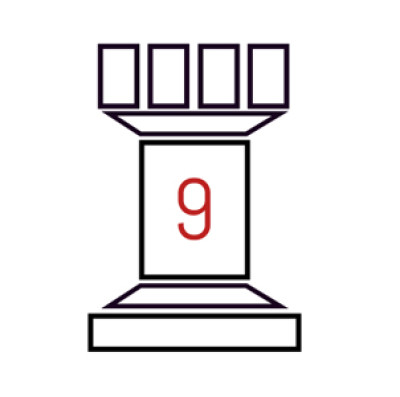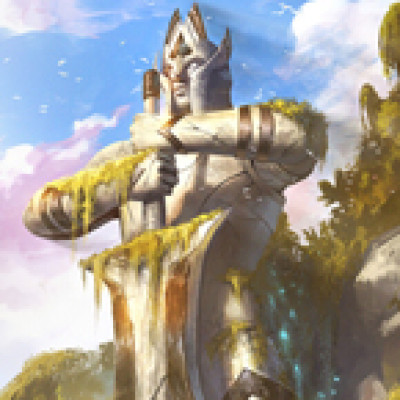One way to think about strategy in card games is in terms of "card advantage" Recently, I've been noticing how traditional ideas of card advantage are only part of the picture in Flesh and Blood. I think there are (at least) three forms of card advantage that can be relevant: cards available immediately, cards remaining in deck, and card quality.
Cards Available ("Traditional" Card Advantage)
Cards available- the first form of advantage- consists of having more cards available to use than your opponent. In most games, this is simply referred to as “card advantage”- and in most games it’s much more relevant than in Flesh and Blood!
In many other games (as many have a background in it, we'll use Magic: the Gathering as a notable comparative), you draw at a steady, predictable rate. As a result, if you can neutralize multiple opposing cards with just one card of your own, you can get a lasting advantage. People playing these games sometimes talk about “two-for-ones”, “three-for-ones”, and so on: situations or cards that let you take out multiple opposing cards while only losing one of your own.
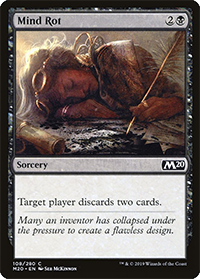
Magic: the Gathering's Mind Rot is a basic two-for-one: one of your cards for two of theirs. Card advantage!
Similarly, people playing Magic (and other games with a fixed draw rate) sometimes talk about “cantrips”: cards that draw a card as part of their effect. These can similarly contribute to card advantage by “replacing themselves” in your hand- an important feature in a game where you normally only draw one card per turn!
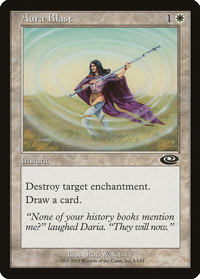
Magic: the Gathering's Aura Blast trades one-for-one with an enemy enchantment- but you draw a card afterwards, often leaving you with card advantage since your card “replaced itself” in hand.
Flesh and Blood is relatively unusual in that you redraw to a full hand size at the end of each of your turns. As a result, "traditional" card advantage is somewhat less impactful than it would be in other games, since the advantage you gain is often short-lived, and does not grant much of a lasting advantage. Even if you force an opponent to block with their entire hand and skip their next turn, they’ll draw back to full hand size and can mount an attack of their own if you let the pressure off.
Similarly, keeping cards in hand is actively inefficient in many cases. While in Magic you usually want to have cards in hand at the end of the turn, in Flesh and Blood those cards can be negative; since you're drawing up to maximum hand size anyway, keeping something in hand doesn't provide extra cards for next turn, it just means you didn't use as many cards as you might otherwise have been able to and are cycling through your deck slower.
In Flesh and Blood, keeping cards in hand is actively inefficient.
However, there are a few ways to generate a lasting "traditional" card advantage in Flesh and Blood. The most obvious one is by putting a card into arsenal. Doing this allows you to go into your next turn with an additional card; if your opponent doesn’t have a card in arsenal themselves, that means you’ll be “up one card”. Further, some Items can act as card advantage: Dash’s items are one of the only ways to build a lasting board with cards that can be used repeatedly as the game progresses, while even playing the humble Energy Potion is in some ways like going into a future turn with an extra card to pitch for resources.

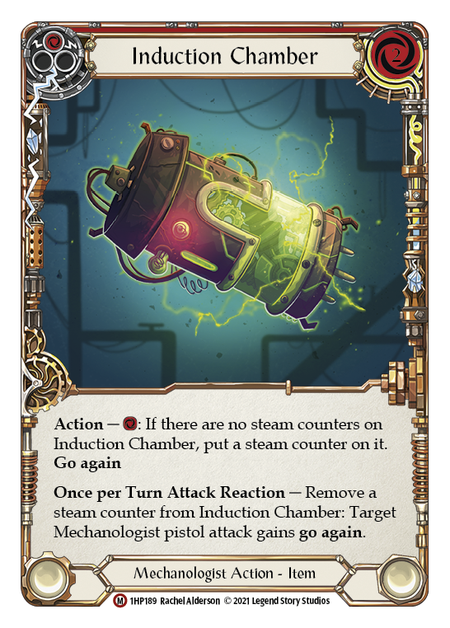
Another way to build card advantage in Flesh and Blood is with effects that draw while still allowing you to do other plays. Because you’ll be redrawing to maximum hand size anyway at the end of the turn, drawing isn’t very good if you don’t have a way to use the card you just drew (unless, as mentioned before, it fills up an otherwise empty arsenal). However, some effects allow you to draw while still continuing your turn, thus potentially giving you more cards that you can pitch or play immediately.
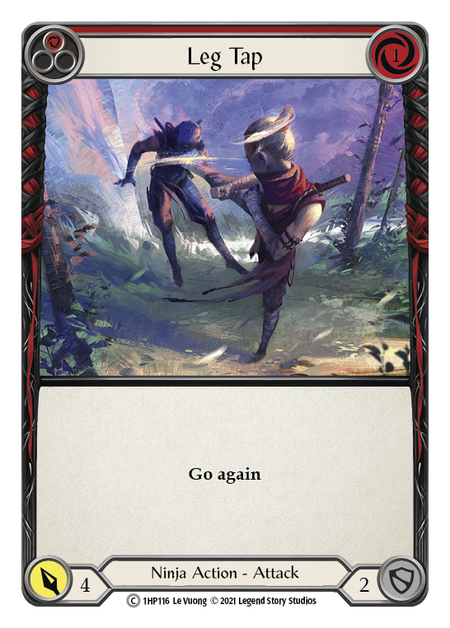
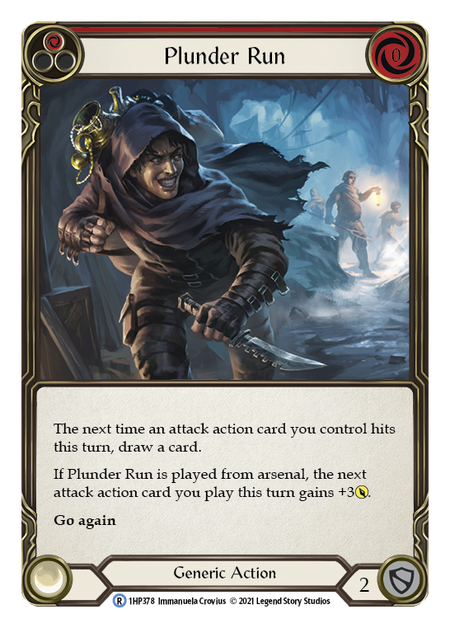
For example, combining Plunder Run with a go again attack like Leg Tap can allow you to draw a card while still making other attacks later in the turn. On the other hand, if you use your last action point to play a copy of Snatch while you already have a card in arsenal, the on-hit draw probably won’t be that relevant since you won’t have an action point remaining afterwards. As a result, a savvy opponent might just let the attack hit because the card draw is unlikely to matter much.
Cards Remaining
The second form of card advantage in Flesh and Blood is cards remaining. This is only relevant in matchups that are likely to approach fatigue, but can be decisive in those cases- and unlike some other card games, fatigue is a very realistic possibility in certain matchups!
In Flesh and Blood, there are several things that you can do to get an advantage in terms of cards remaining. For example, weapon attacks typically don’t cost cards, just resources; and since you can pitch a card to generate resources while keeping that card in your deck, you are making an attack that doesn’t cost you any cards remaining, but will usually either damage your opponent or make them block. Since blocking cards don’t go back into the deck, this means that your attack has generated an advantage in terms of cards remaining.
Similarly, bigger attacks can get a bigger advantage in terms of cards remaining. Wounding Blow (red) is an “on curve” attack, inflicting four damage for zero cost. An opponent playing the long game might well block with one card and take one damage. This means your attack has inflicted one damage and is “card-neutral”: you spent a card and they spent a card, so neither player got an advantage in cards remaining.
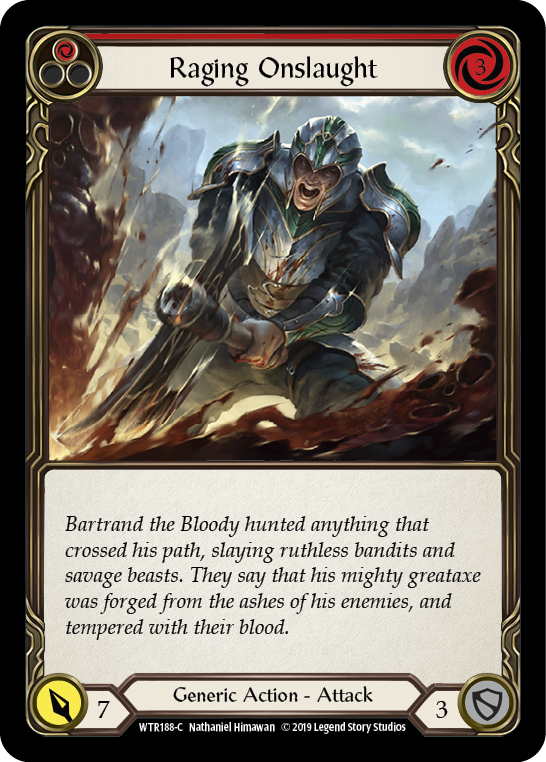
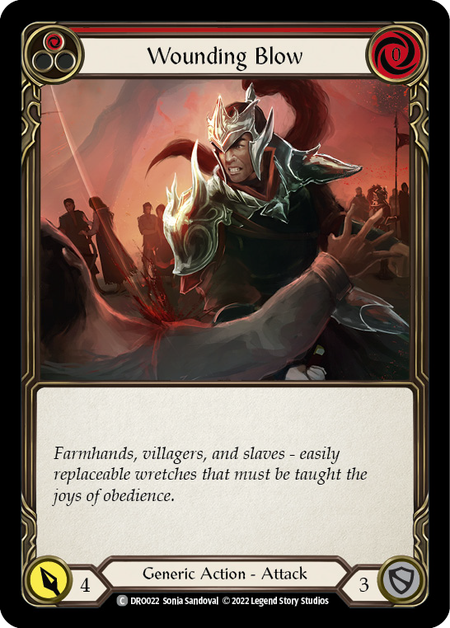
On the other hand, if you played a Raging Onslaught (red) instead- also an “on curve” attack at seven damage for three cost- an opponent playing the long game might well block with two cards and take one damage. In terms of “turn-by-turn” dynamics, you both spent two cards (you pitched one and played one, your opponent blocked with two); but the card you pitched is still in your deck and the card they blocked with isn’t- so you “gained a card” in the long run, and have generated a bit of advantage in terms of cards remaining.
(If you're intrigued by the subject of 'on curve attacks' and card efficiency, you'll find this topic discussed further in two of our recent articles. Roger Bodee's Dorinthea Unsheathed and Frank Hung's Lightning in a Bottle both dive into this core game element.)
The same principle holds true for defense. A big defense reaction like Unmovable might take two cards to play (both the card itself and something to pitch in order to pay for it), but it might negate multiple cards from your opponent. A red Unmovable from arsenal can block eight damage, potentially stopping an attack that your opponent buffed with Nimblism; your opponent lost both their attack and their Nimblism (two cards), while you lost just your Unmovable (since your pitch card stays in deck).
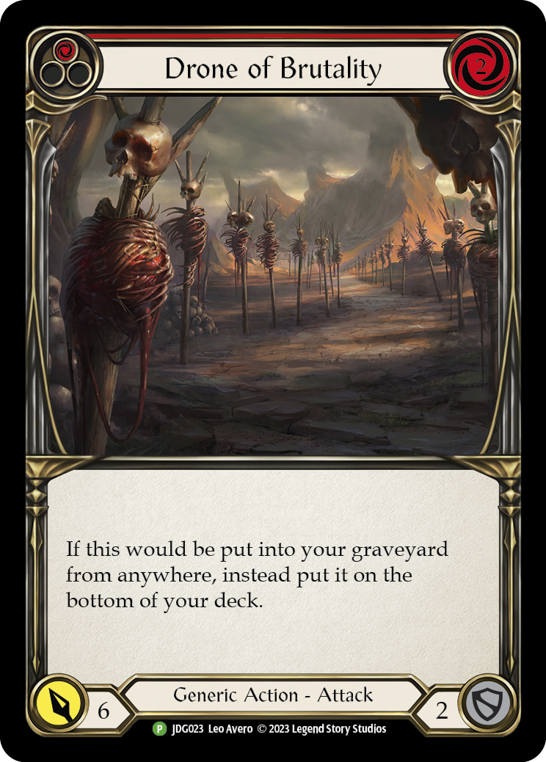
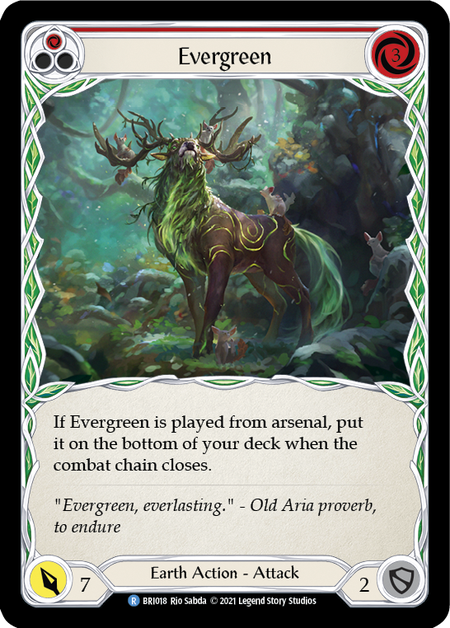
Further, a few cards have special effects that return themselves or other cards to the deck after being used. The most extreme example of this was Drone of Brutality, a card that gave such extreme “cards remaining” advantage that it was actually banned! However, options like Evergreen and Remembrance are still there for those who want to shore up a fatigue gameplan by gaining more of a cards remaining advantage.
In general, cards remaining matters only in long games that are going to approach fatigue; if the game is an “aggro race” that lasts only five turns, how many cards you had left at the end really doesn’t matter much!
Card Quality
The third form of card advantage in Flesh and Blood is card quality. This, quite simply, is how good the cards remaining in your deck are, especially in the current matchup.
In some cases, one card is simply better than another: if one player has Arcanite Skullcap equipped and the other player has Ironrot Helm, the player with Skullcap has an advantage. Similarly, if one Boltyn deck is running Wounding Blow (red) and another is running Express Lightning (red), the one with Express Lightning has an advantage, In both of these cases, one card is basically “the same but better”, and the player running the better version will have an advantage.
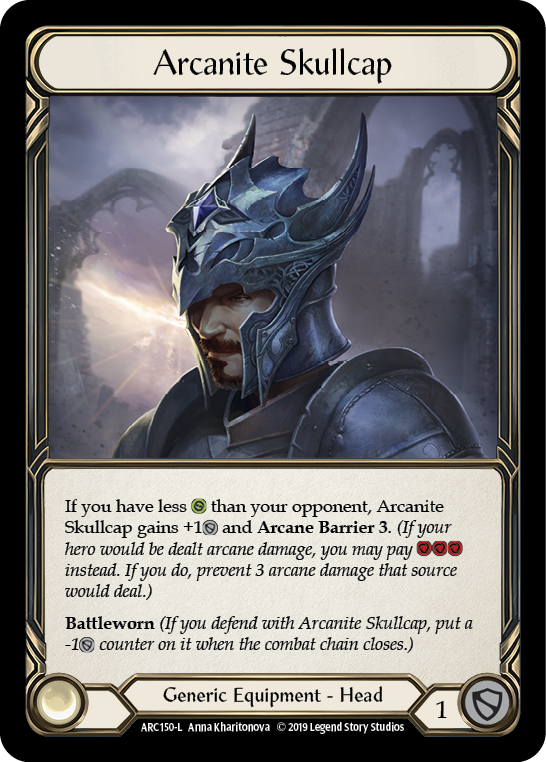
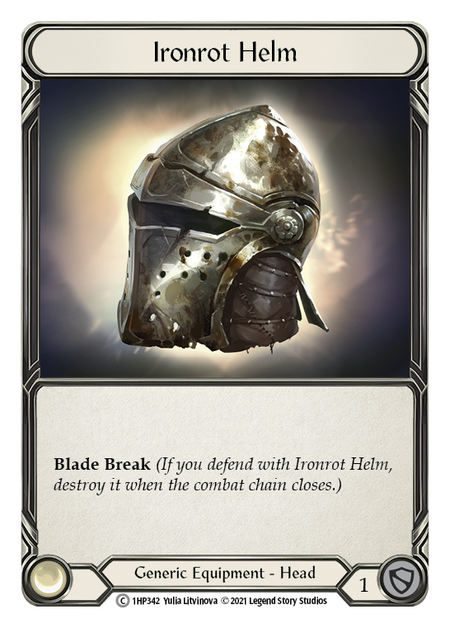
This type of card quality can be especially pronounced when deckbuilding skill or card availability greatly differs between players, when someone “sideboards wrong” (puts cards into their deck that are bad for the matchup), or in Limited play (where some elements of card quality are out of player’s control).
One especially interesting situation for card quality advantage can be in Draft play. In general, if you draft a hero that has more other players drafting it, you will likely have lower card quality (all else being equal) than a player drafting a hero that has fewer other players drafting it. This can be a big enough deal that in some cases it can outweigh a player having a hero that would otherwise be favored!
For example, Briar is typically considered favored against Oldhim or Lexi in Tales of Aria draft, but in one of the Calling finals there were five Briar drafters, two Lexi drafters, and one Oldhim drafter! Even though Briar was notionally a stronger character, when Briar cards are split across five drafters and one player gets all the Oldhim cards, the Oldhim player is going to have a major card quality advantage.
For strategic advice on preparing for drafts, check out Drew Cordell's recent article on Skirmish Season. Mark Chamberlain also praised the draft format as he made the case for a FaB Cube.
Most of the above factors I’ve discussed involve things that are “outside the game” or take place before it. However, there are also ways to gain a card quality advantage during the game itself.
One strategy that some have found success with before is “trading bad cards for good”. If you take a defensive position and block out enemy attacks with bad cards, you can potentially increase your card quality by trading weaker cards of yours for stronger cards of theirs. For instance, if I block a Command and Conquer with two copies of Soulbead Strike (blue), my opponent has lost one of their best cards and I have lost two cards that are not so important to my gameplan. If I make similar trades throughout the game, at the end of the game I’m going to have some powerhouse cards available while my opponent might be running out of gas, seeing all blue hands as the cards they pitched earlier come back, and so on.
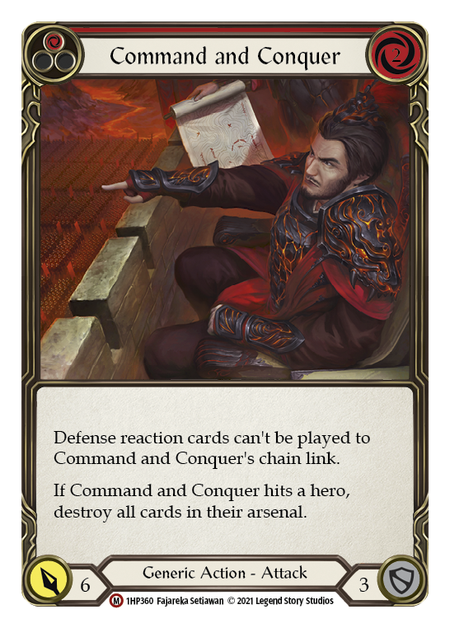
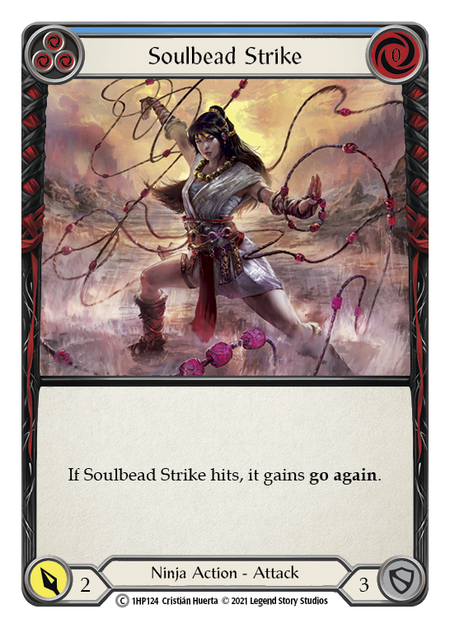
Similarly, cards like Remembrance or Sow Tomorrow can be used to return other cards to your deck. You can use this to return your best cards to the deck later in the game, greatly increasing card quality. The only problem is these cards are bad quality on their own, so in a sense you are lowering your card quality for the early game in order to enhance it later on. However, that might be just the ticket for a deck that wants to play the long game.
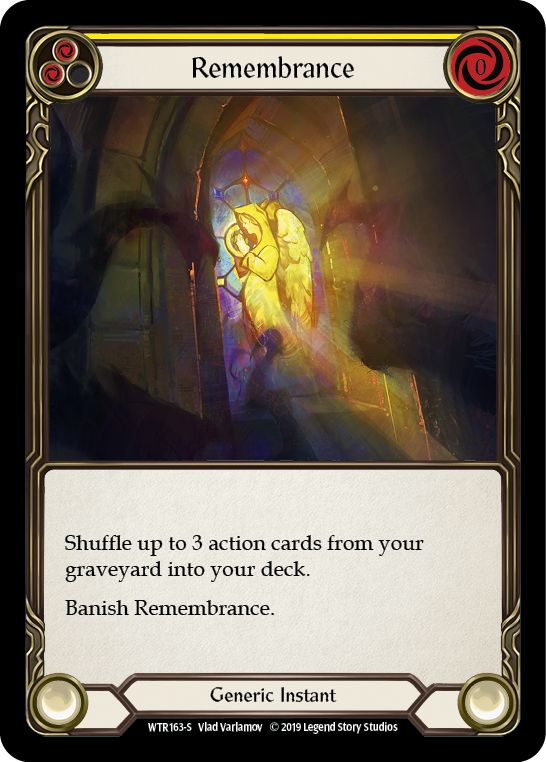
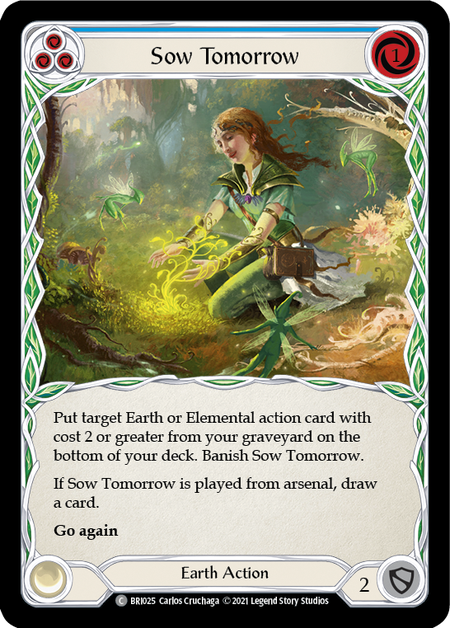
Putting It All Together
Between those three forms of card advantage- cards available, cards remaining, and card quality- you can gain momentum in Flesh and Blood. Further, these effects can trade off against one another to some degree!
For example, you can gain an advantage in terms of cards remaining by running more than the minimum sixty cards in deck; however, doing this typically dilutes your card quality, as you’ll likely be running cards that are not optimal for the matchup, and running more than the minimum decreases the percentage of your deck that consists of your best cards.
Some cards allow you to get an advantage in terms of cards available, but reduce your cards remaining; for example, Gorganian Tome in a Briar deck replaces itself in hand and can enable other abilities, but you’ve essentially spent an extra card for the turn. The most extreme version of this is Chane’s combination of Blood Debt cards and Soul Shackle tokens, which mill away your cards remaining at a very fast pace and degrade your card quality (Blood Debt cards are typically inefficient) in order to give you more cards to use!

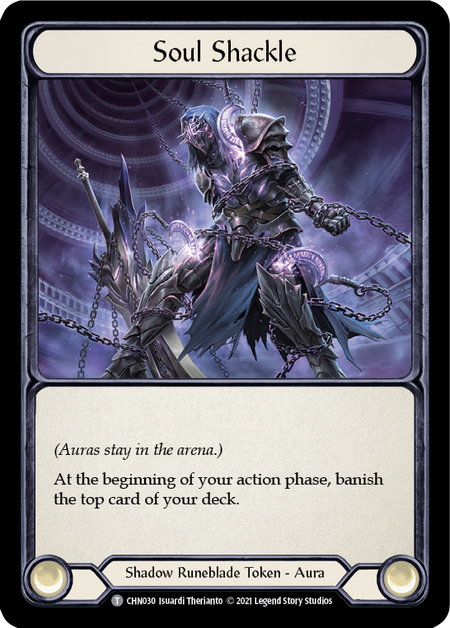
Ultimately, all these forms of card advantage can be useful when playing Flesh and Blood; and in different situations, each might come to the forefront. It can be helpful to know which you’re prioritizing (for example, most aggro decks go for card quality and traditional card advantage at the expense of being weak on cards remaining) and to plan accordingly- both in-game and in deckbuilding!



